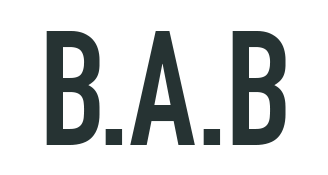I had lots of coffee chats with my peers and new analysts throughout my tenure at Deloitte. The most common question that came up was "What did you learned?" (or just variation of this, like "any advice working here?"). I had some downtime to reflect and think deeper in this topic recently. So I decided to consolidate and share experience learned from both sunny and rainy days. Hope this post can provide some inspiration and guidance as some of you kick off your career.
Of course, I've learned more than just 3 things. But I think being able to GSD, balance IQ and EQ, and find your "T" talent are the most essential ones for immediate and long term success.
“GSD” is essential
"GSD" stands for "Get Sh*t Done". I’d argue that GSD is the most fundamental and irreplaceable currency in professional settings, both in and outside of consulting. It is the base unit for building up trust, respect, and reputation. Above smarts, a likeable personality, it’s key to show a reliable ability and relentless attitude to GSD from the smallest task, such as taking notes in a meeting, to larger initiatives like leading a team. GSD is like an individual gear in a watch. If one gear doesn't work, the watch stops, period. If the watch doesn’t work, the gear will either be fixed or replaced, sooner or later.
So, how do you become better at GSD if you are starting off your career?
Listen to instructions, and listen carefully - Consulting is a very team-based and results-oriented business. We all play a role in this from small to large ones. Even if you’re brand new, it’s crucial to listen to what your manager asks you to do. Always clarify immediately when unclear, and always confirm deadlines (you’d be surprised how effective early intra-team alignment is for later success).
Understand the context – You’ve probably heard of the phrase "think about the bigger picture". What it really means is to understand the ultimate objective for a client, to tie it directly to your tasks (i.e. notes, analysis, research), and to be deliberate in how all the dots are connected.
Always go the extra mile after completing 1) and 2) - Many of us are driven and creative people who want to go above and beyond. This could manifest in thinking of ways to improve how things are being done, driving new initiatives that can help the team or the company, etc. The caveat is to do so only after you finish what you are asked to do, so that you’re not sacrificing critical deliverables. But, how do I know if my “extra mile” is relevant? The key here is to understand the big picture so that ultimately, you’re not just fishing for a good review – you’re actively hunting down value that was not top of mind for the team. Imagine this hypothetical scenario: your team is lost in a desert. It's better if you come back with 2 gallons of water with a map to the water source, when you were asked to find 1 gallon of water, than coming back with a big shiny diamond.
IQ + EQ = Boundless Potential
Ian Scott, a Partner I worked very closely with and a Ph.D in Physics from Harvard, once told me - "IQ only gets you so far in your career, the rest is all EQ". I believe he said this because I did some low-EQ things, but I cannot remember the exact situation.
In retrospect, most of the good leaders with whom I enjoyed working are the ones with a very solid understanding of their domains (i.e. corporate strategy, analytics, technology, etc.). Beyond this, these leaders are exceptionally good with people. Not everyone is a natural social butterfly. In fact, some are actually awkward, but I can sense that they genuinely care, listen attentively, and respond to my specific situations.
So, how do you improve EQ? I am still on my own journey to search for the best solution. But what I found works well is to:
Focus on only the person(s) in front of you - I try to eliminate everything that can distract me from listening to the conversation. For example, I would close my laptop and flip over my phone, only bringing a notebook and pen to meetings, or ask for 5 more minutes to wrap things up so I can focus on the conversation.
Accept the fact that other people think differently - this allows me to have more patience and empathy to understand why people are having a different opinion from mine or how they are facing a challenge.
Respond thoughtfully and specifically - I try to avoid using jargon and fluffy statements when I speak. I have picked up so many buzzwords after I started working, many of which probably were invented by consulting firms. Big words may sound smart at first, but I often ask myself "what did he / she just mean, actually?" 5 seconds later.
Find your "T" Early
Conor Mlacak, another Partner I worked closely with and received lots of mentorship from, introduced the concept of "T" shape talent not long after I joined Deloitte. It is the framework to help create your unique skill profile and focusing your effort on the right areas. The horizontal bar of the “T” represents transferrable skills you can apply in any type of project. In consulting, this usually refers to core skills, including problem solving, storyboarding, logical reasoning, client / internal team management, project management, etc. The vertical bar of the "T" is your specialty skills. It can be a business domain like marketing or a technical area like analytics. You should aim to know the ins-and-outs of this vertical as you move along your career.
Once you know what your "T" looks like, you can then purposefully focus on the types of work to help grow that skill set. More importantly, it helps you to de-prioritize work that may not align with your plan. This is a good starting point for a 2-4 year career plan.
So, how do you find your T shape?
Actively seek out opportunities to build your skillset for the horizontal bar, whether it’s asking for assignments that are more analytical or asking for opportunities to present in front of people. Be open with your boss or advisor about your skillset priorities – a mutual understanding and aligned interests will help kick-start your “T” construction process.
Finding the vertical is a combination of your interests, market needs, and available opportunities. Personally, I was able to build my vertical around Big Data and Analytics because I have a passion for technology, and there was (and still are) lots of investment into these areas. It just happened that Deloitte signed on many projects with some skill gaps, so I just jumped in opportunistically.










